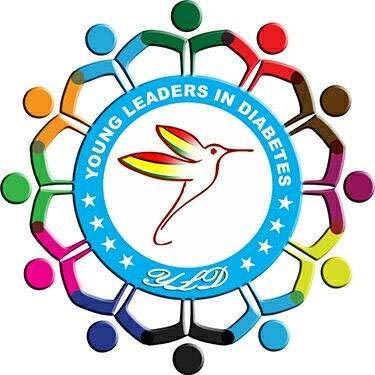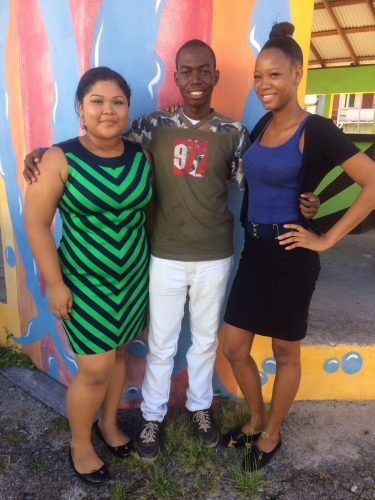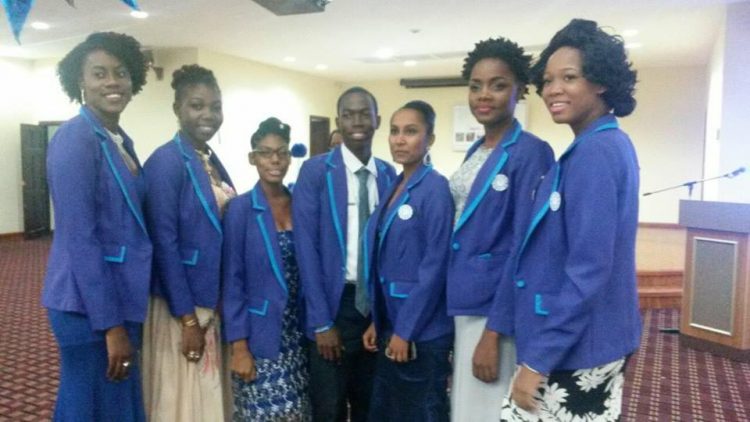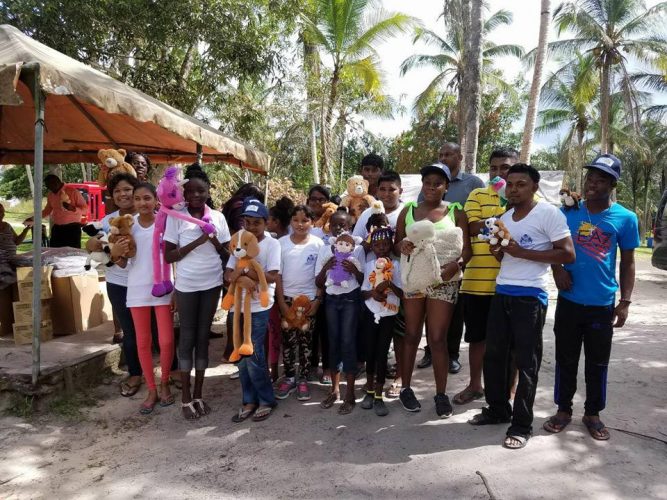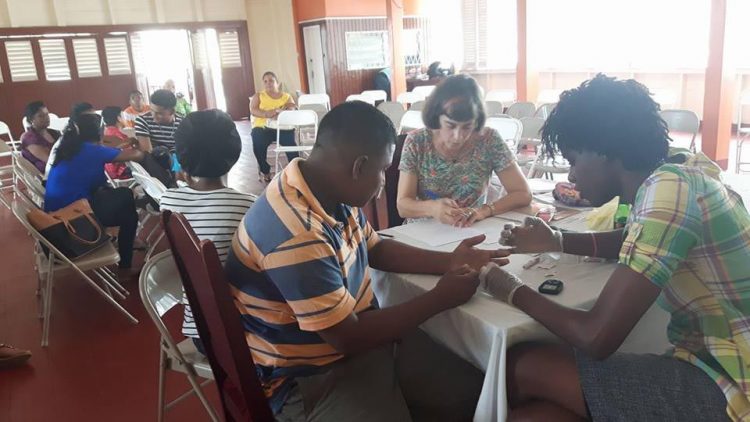At age 15, Martin King was diagnosed with Type 1 diabetes and his life changed in many ways.
One of those changes—keeping his condition a secret—has unexpectedly led to him becoming part of an advocacy group that has been working to help youth who are living with Type 1 diabetes.
According to the Mayo Clinic website, Type 1 diabetes, once known as juvenile diabetes or insulin-dependent diabetes, is a chronic condition in which the pancreas produces little or no insulin. Insulin is a hormone needed to allow sugar (glucose) to enter cells to produce energy. There is no cure, however, the site says treatment focuses on managing blood sugar levels with insulin, diet and lifestyle to prevent complications.
King, now 19, told Stabroek News that although he had been losing weight and was often feeling thirsty and fatigued and making frequent visits to the bathroom, he had never considered these to be signs of a chronic illness.
He explained that it was only after he saw a TV programme that identified the symptoms of diabetes that he realised he had been experiencing the same things.
“While I was hearing the symptoms, I was saying to myself, ‘I am experiencing this.’ I visited the doctors, did a blood sugar test and it was high. They told me I am a Type 1,” he recalled. He added that he did not fully understand what the diagnosis meant. “I just knew it was chronic [and] my life had changed in that moment,” he added.
King said after being diagnosed, he received support from his family but he nonetheless began to isolate himself from most activities and he kept his condition a secret from his friends. He explained that he withdrew because of the need to inject his body with insulin. “With Type 1, you have to be using needles and syringes,” he noted, before adding that in addition to the syringes, a balanced diet and exercise are now the key components of his life.
Offering support
Keziah Nestor, a friend of King and President of the Young Leaders in Diabetes, the youth arm of the Guyana Diabetic Association, said the group may have never been created if King had not kept his condition a secre4t.
Nestor told Stabroek News that she only learnt of King’s chronic illness when her mother, who works at the Guyana Diabetic Association, asked him if he had received his supply of insulin. This led Nestor to ask King about his condition. He told her he had not wanted anyone to know, which led to her realisation that many more youths could be allowing the condition to get the best of them, as there was no support for young people who suffer from the chronic illness.
As a result, the Young Leaders in Diabetes group’s primary mission is to raise awareness about Type 1 diabetes and support diabetics in living a healthier lifestyle. Within the last year, the group, which comprises both Type 1 diabetic and non-diabetic volunteers, has found not only children but adolescents and young adults in need of help. It has been working with the Guyana Diabetic Association, the Pan America Health Organization (PAHO) and the Ministry of Public Health to facilitate outreaches, camps and seminars in the drive to help people understand diabetes and give support to those affected by letting them know that Type 1 is not the end of the world.
During the annual July-August school break in 2016 and this year, Nestor said the group facilitated educational camps, where it saw firsthand the dire need for education and awareness. “We saw the struggles parents and supporters go through because they are not fully aware of the dos and don’ts. We have had Type 1 [diabetics] struggling as well to manage their blood sugar,” she said, while emphasising that Type 1 diabetes does not only affect the diabetics but also their families and friends.
Renee Beaton, a member of the group, added that diabetes is a silent killer and the public needs to be educated. “A person can walk on the road and fall and we may not know the reason but if we are aware of the signs and symptoms of diabetes, we can check and at least help the person. In this way, we would be able to tell the doctor when medical attention is given [that] the person is a diabetic and [ensure] the right treatment is administered,” Beaton said, while urging diabetics to seek support and not hide their condition. “When you are sick, you need support to deal with your sickness you can’t just sit and expect persons to know you are sick… when people know you are sick they would offer help,” she said.
‘I know the struggle’
Like King, Avenell Foo, 18, once isolated herself as a result of the condition. But Foo, who was born with Type 1 diabetes, has become an advocate and shares her story whenever she has the opportunity.
Foo said living with Type 1 diabetes previously led her down a depressive path as she would often feel frustrated at not being able to lead a normal life. While most children might have been enjoying their school days and taking part in activities, Foo said she stayed away because she did not feel normal. As she became a teenager, she said, it became worse.
Despite the support of her mother, who had been monitoring her condition as she grew up, she said she often felt hopeless. “At times you get frustrated, taking insulin, boring yourself… I never wanted people to know I am a diabetic… I cried many, many nights asking why I got it. Many times I felt hopeless. I used to shut myself off, but since the support group I started to come around, I started to open up about my condition to people and let them know, ‘I know the struggle,’” she explained, while adding that this is the reason why she is an advocate for the youth group. “Now I can offer advice and bring awareness to people, especially a child who is diagnosed with Type 1. I know what they are going through,” she said.
Foo said she now carefully monitors what she eats, uses less sugar and she has also started to exercise more, which has meant less medication. She too said that the parents of diabetics should be sensitive to their children’s emotions, because they can be depressed or frustrated or even mildly stressed out over their health, which can have negative consequences on their blood sugar levels. “Growing up I was by myself, I had low self-esteem. I was always a chubby kid. Due to insulin I gained weight. Now, I feel comfortable and loved and appreciated,” she added.
Kendra Halley, another member of the group, said she had to research online to learn about her condition as there was not a lot of information available to her about Type 1 diabetes when she was first diagnosed. She said after losing weight and feeling ill, she visited a doctor and was admitted in hospital. She recalled that her blood sugar level was alarmingly high.
After she was discharged from the hospital, Halley said it was difficult to adjust to her new life style. “I had to manage how much food I was eating, what I was eating and always taking insulin to control my blood sugar,” she explained.
Halley then faced another challenge when she got pregnant. She said she did not want her unborn child to be a diabetic like her.
Bridging the gap
The latest report out of the Caricom Health Commission in early July indicated that Guyana has the highest diabetes rate in the entire Americas. Further, in 2014, according to the International Diabetes Federation, 61,800 persons here were affected by diabetes, while the CDC Global Heath report stated that diabetes was the fourth highest cause of death in the country.
As a result, Dr Troy Sagon, Technical Officer in the Chronic Disease Unit of the Ministry of Public Health, said the youth advocacy group plays a key role by educating diabetics and parents/guardians about Type 1 diabetes.
“Young Leaders in Diabetes is a big help to us.
These youths, they assist to communicate with [diabetics].
They teach them to administer the insulin, diet, exercise and offer encouragement.… They would visit the hospital and speak with Type 1 [diabetics] and keep encouraging them,” he said.
At every one of its meetings, the group offers education on diet, which is of the utmost importance. In addition to one on one sessions, the group also utilises social media to educate people about the signs and symptoms of diabetes and offer tips for a healthier lifestyle.
Sagon noted that education remains the most important part to having a healthy lifestyle. “The Diabetic Association helps us greatly, so we have a collaborative effort. Once patients are registered, we would refer them to the association, [which] helps with counselling and education,” he said, while explaining that in some cases, counselling is necessary to help persons move forward with their new lifestyles.
Sometimes, he noted, patients become depressed after learning that they are Type 1 diabetics. Counselling is also provided to parents/guardians.
Head of the Guyana Diabetic Association Glennis Beaton added that the Young Leaders in Diabetes group bridges the gap between two different generations.
“This group has been hosting outreaches and educating persons and this is what we need. Young people to young people, they get the training from us and they go out and educate those persons from the older generation [who] find it difficult to connect with,” Beaton pointed out.
Currently, in an effort to raise awareness about Type 1 diabetes, the Guyana Diabetic Association and the Young Leaders in Diabetes are collaborating with Miss World Guyana Veena Mookram in a nationwide awareness campaign. The campaign includes Public Service Announcements, health fairs, walks, the publication of a diabetes care cookbook, and the launch of a fitness park in Diamond.
Meanwhile, Sagon said that the ministry has placed a lot of emphasis on Type 1 diabetes and as a result it has developed several programmes to assist diabetics.
There are approximately 64 registered Type 1 diabetics who are receiving medical support from the Ministry of Public Health.
Sagon explained that they have programmes where they supply Type 1 diabetics with NovoPens (insulin delivery devices), glucometer strips and alcohol swabs in amounts that would last from three to six months.
He noted that in some cases, they would also put systems in place for people living in remote areas to uplift the necessary equipment at the nearest health centres, although staying in contact with them remains a challenge.
